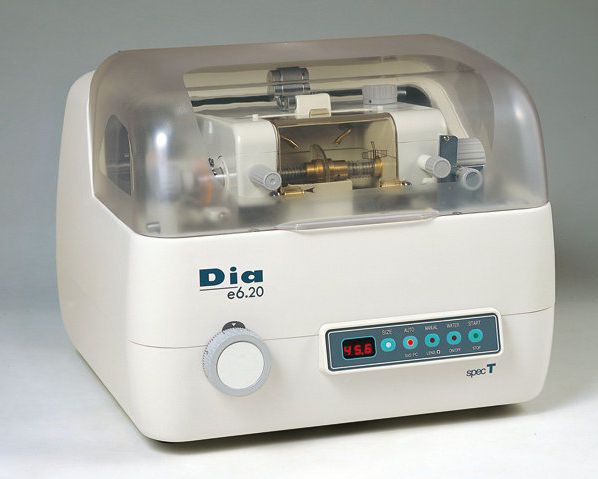From the historical beginnings of optics, the only material used to produce spectacle lenses was mineral glass. Until the mid-20th century, when CR39 was discovered, mineral lens production began to replace organic (plastic) lenses. At present, plastic lenses in all modifications make up 97% of the world’s production.
Mineral spectacle lenses
The mineral glass lens edger consist mainly of a mixture of so-called glass-forming oxides, the main component of the glass being silicon oxide. By adding other oxides such as lead or barium oxide, the refractive index of the material can be changed. By increasing the refractive index of the material, we can maintain the dioptric values ??and the diameter of the lenses when using less glass.

For the manufacture of mineral lenses, refractive indices of 1.5, 1.7, 1.8, 1.9 are used. The higher the refractive index, the harder the glass is and the higher the dispersion. For better imaging properties, high-quality anti-reflective coatings should be applied to improve the visual perception. For refractive indices of 1.8 and 1.9, the weight is already so high that it was not substantially absorbed on the market.
The undeniable advantage of the mineral lens is its very strong surface. Therefore, mineral spectacle lenses are suitable for use in a dusty environment where the surface of the lens is threatened. For its weight, however, this lens can only be recommended at lower dioptric values.
Plastic spectacle lenses
Plastic spectacle lenses came into the market in 1960, when the CR39 material, which is lightweight and practically unbreakable, began to be used. The refractive index of the base material is 1.5. Higher indices are 1.6, 1.67 and 1.74. The higher the refractive index, the softer the material, the better the reinforcement layers must be used. For enhanced visual comfort and longer lens life, reinforcement layers are supplied as part of multilayer surfaces (together with anti-reflective coating, hydrophobic layer and others).
- The ultra-flexible plastic lens is a special polycarbonate lens under the designation PNX 1.53, which is suitable for drilling glasses or spectacles that require greater safety.
- All plastic lenses should be provided with high-quality hardened layers and other layers such as a hydrophobic or oleophobic layer or an antistatic surface. These layers are not applied without high-quality anti-reflection treatment.
- Plastic lenses are desirable because of their low weight and high variability in refractive indexes. They are especially suited for permanent or long-term wear and for higher dioptric values. They are especially suitable for children. Nevertheless, you must never forget the quality of the surface treatment.
Surface treatment and thinning
Surface treatments are an integral part of glass lenses, helping to maintain and improve optical quality. In addition to the hardened surface, which can be applied separately, the other layers are bonded to the anti-reflection coating. Surfaces are of different quality according to the number of individual layers. With a high quality surface, the lens life can be extended.
Surface finishes
Claim
The basic layer that all spectacle lenses should be treated is a claim. This reinforcing layer, 3 to 5 microns thick, reduces the risk of scratching the surface of the lens. The basic application is rinsing in the hardener bath. The layer is then applied regularly to both surfaces of the lens. In addition to the protective function, the hardened surface is the basis for the application of additional layers.

